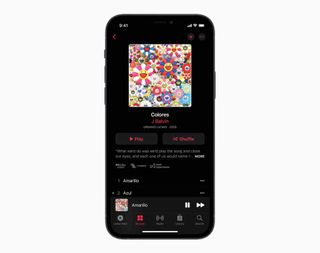The Beatles in Spatial audio 'doesn't sound quite right', says producer

What you need to know
- The producer of The Beatles' Spatial Audio albums on Apple Music has said that one of the albums doesn't sound quite right.
- Giles Martin says he's going to mix Sgt. Pepper's Lonely Hearts Club Band again.
- Apple Music unveiled Spatial Audio and lossless audio for Apple Music earlier this year.
Giles Martin, the producer behind The Beatles' two spatial audio albums on Apple Music, has said that Sgt. Pepper's Lonely Hearts Club Band doesn't sound quite right, and that he plans to mix it again.
Speaking to Rolling Stone, Martin said that turning the tracks into Dolby Atmos mixes was "a bit like someone you love for years having a slightly different haircut... and you realize you still love them."
From the interview:
Sgt. Pepper's, how it's being presented right now, I'm actually going to change it. It doesn't sound quite right to me. It's out in Apple Music right now. But I'm gonna replace it. It's good. But it's not right. Sgt. Pepper's was, I think, the first album ever mixed in Dolby Atmos. And we did that as a theatrical presentation. I liked the idea of the Beatles being the first to do something. It's cool that they can still be the first to do something. So Sgt. Pepper's is a theatrical mix that's then being converted into a smaller medium. Therefore, it's not quite right. I'm gonna go back to the theatrical mix and make it into what's called near-field Dolby Atmos, as opposed to the cinema Dolby Atmos. It's a bit bright. It's a bit digital. But again, I'm gonna replace it, so that's cool.
Martin said Sgt. Pepper's was lacking a bit of bass and weight behind it, but that Abbey Road was much better in Atmos because it was much closer to the stereo mix of the original, sonically.
Martin said that the process for turning an album into an Atmos mix started with stereo before expanding into Dolby Atmos, using a 3D square to move tracks:
In the old days, when I was doing the Love show [in Las Vegas] and the Love album, I had a joystick. But now, actually, I have a mouse. I want my joystick back! Essentially you're looking at a three-dimensional square where you can see inside, and you have a dot and you can move it around that space. And then you can also make that dot bigger or smaller so it dissipates among the speakers.
On the impact and quality of spatial audio Martin said "I would say that two years ago, it was unlistenable. And now it's a good experience. The exciting thing is that it'll only get better. I think we're right at the beginning of this. And I think what we what it can do is it can create intimacy with music. You can hear the difference with spatial audio. It may not always be better, but there's a difference. I think we're learning the tools to provide that difference for people. What's great is that it creates more of a lean-in listening environment where you're paying attention to it, as opposed to just having audio being played into your head to stop you from thinking."
You can read the full interview here.
Master your iPhone in minutes
iMore offers spot-on advice and guidance from our team of experts, with decades of Apple device experience to lean on. Learn more with iMore!

Stephen Warwick has written about Apple for five years at iMore and previously elsewhere. He covers all of iMore's latest breaking news regarding all of Apple's products and services, both hardware and software. Stephen has interviewed industry experts in a range of fields including finance, litigation, security, and more. He also specializes in curating and reviewing audio hardware and has experience beyond journalism in sound engineering, production, and design.
Before becoming a writer Stephen studied Ancient History at University and also worked at Apple for more than two years. Stephen is also a host on the iMore show, a weekly podcast recorded live that discusses the latest in breaking Apple news, as well as featuring fun trivia about all things Apple. Follow him on Twitter @stephenwarwick9
Most Popular




